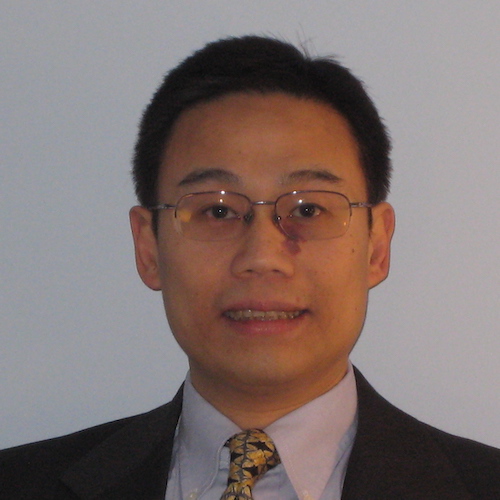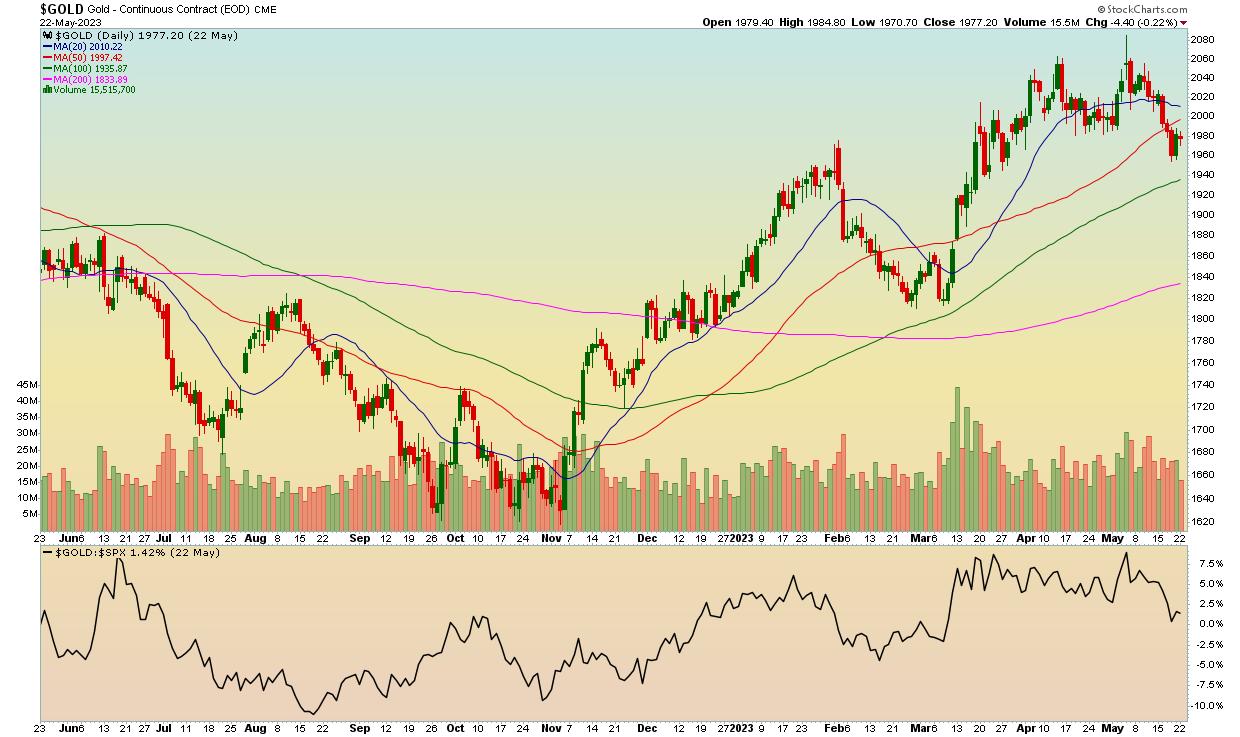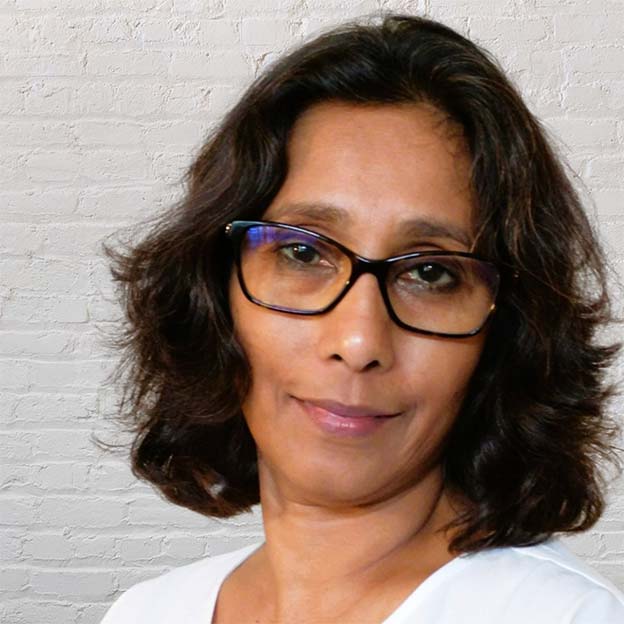May is Asian American and Pacific Islander Heritage Month. In recognition of the AAPI community, StockCharts spoke with a few individuals in the financial community about how their experiences, challenges, and heritage helped shape their careers in finance.
 Jonathan Lin, CMT, CFA, Chief Strategist at JL Market Technicals, has spent over two decades analyzing the financial market. His top mentors, Alan Shaw and Louise Yamada, have played an important role in his technical analysis journey and helped him understand the importance of looking at the big picture and the details when it comes to analyzing the market. Jonathan's Asian American heritage has helped him be open-minded and view things from different angles. It's a unique combination, one that has helped view the financial market from a flexible and practical point of view. In this article, Jonathan shares some of the events that have helped mold his career.
Jonathan Lin, CMT, CFA, Chief Strategist at JL Market Technicals, has spent over two decades analyzing the financial market. His top mentors, Alan Shaw and Louise Yamada, have played an important role in his technical analysis journey and helped him understand the importance of looking at the big picture and the details when it comes to analyzing the market. Jonathan's Asian American heritage has helped him be open-minded and view things from different angles. It's a unique combination, one that has helped view the financial market from a flexible and practical point of view. In this article, Jonathan shares some of the events that have helped mold his career.
Jonathan, could you tell us about yourself?
I was born in Taiwan and came to the U.S. at high-school age. Since then, I've lived in New Jersey. After receiving my bachelor's degree in Electrical Engineering and Computer Science, I worked at Merrill Lynch as a programmer. After getting my MBA, I worked as a technical market analyst for Smith Barney, which eventually became part of Citigroup. Now, I'm an independent market strategist.
How did you get interested in the financial markets, specifically technical analysis?
It's a long story.
While at Merrill, I became interested in trading the stock and options markets. One day, in an internal training class, I met the manager of Merrill Lynch technical analysis IT support, whose team coded stock-scanning programs under the guidance of the legendary Bob Farrell. They ran daily scans for volume spikes, price gaps, 52-week highs, and so on ... all the measures that interest a technical analyst.
Any investment thesis is a continuing work in progress, and shall not be cast in stone.
By the end of our first conversation, I was intrigued, to say the least. Using math to find investing/trading opportunities? What could be more fun for a self-proclaimed math geek working at a brokerage firm?
After asking around the firm, I got to speak with Sonia Dawson, one of Mr. Farrell's top lieutenants. She was kind and helpful and spent 45 minutes with me. She recommended books to read and classes to take and that I join the MTA (now CMT Association). So I started doing everything she suggested, including taking technical analysis courses at the New York Institute of Finance (now FT Knowledge).
Technical Analysis I was taught by Bill Raftery, one of my future colleagues; Technical Analysis II was taught by Alan Shaw, my future boss. Actually, I taught at NYIF for a while some years later. It's interesting how life works.
Alan, the head of Technical Research at Smith Barney, hired me upon finishing his class, and I spent 11 years there. When Alan's successor Louise Yamada founded her firm, I followed.
Who are some mentors who have influenced or helped guide you in your technical analysis journey?
I owe my career to Alan Shaw and Louise Yamada, both venerable giants in technical analysis and recipients of Lifetime Achievement Awards from the CMT Association. They're such insightful and independent thinkers who can see the big picture and the minute details.
It has become my mission to keep that flame going and help carry the decades of wisdom they've shared forward.
In the decades of experience you've had in the industry, what are some challenges you faced?
‘Concept versus reality' is a phrase that Alan frequently uses. It reminds us of how a long-term investment thesis (the concept) requires constant near-term reality checks. Is the structural trend merely experiencing temporary hesitations? Or is there a new factor at work? Do we need to amend or even abandon the original concept?
Any investment thesis is a continuing work in progress and shall not be cast in stone. That, to me, is the foremost challenge any analyst faces, whether fundamental, technical, or macro—the need to objectively view and review your original concept; the need to let go of ego, pride, and perceptions... to become your own ‘fly on the wall.'
For nearly a year now, I've been developing a thesis that we may be experiencing an economic and market environment similar to that of 1966–82.
Another ongoing challenge is the need to revamp your analytical toolbox. The financial markets evolve, and when the market structure changes, you must reexamine the indicators and models you use. You may augment, modify, or even replace some decades-old, industry-standard indicators.
What do you like the most about what you do?
Well, it keeps me on my toes ... sometimes too much!
To me, the markets are a set of interlaced complex puzzles to solve, and just when you think you have some clues, things shift and evolve. Market watching can be exhilarating one day, exhausting on another, and boring on others. The market is like the ocean—never turn your back on it!
How has your heritage shaped the person you are today?
The first thing that comes to mind isn't unique to Asian immigrants. It applies to many others, especially those of us who came here in our teens. We came to the US versed in our culture and had to immerse ourselves in a different environment. We were young enough to have a relatively blank slate, but we weren't too old to be set in our ways.
This forced us to adopt a more diverse point of view to fit into a multicultural environment, straddling between home life and school/social life. I believe that also leads to a degree of open-mindedness or the need to see things from multiple angles. This type of flexible and multi-faceted thinking can be helpful in our line of work.
In terms of my Asian heritage, in particular Taiwanese cultural influences, I have become a discriminating eater. If you're a foodie and have never been to Taiwan, you owe yourself a trip there. I kid you not. Taiwan has taken Chinese cuisine to a new level, has sushi that thrills Japanese visitors and French pastries that win international prizes. Taiwan is a food lovers' heaven.
On a more serious note, my cultural background allows me to read more Zen-related literature and learn its life philosophy. Zen isn't a religion, but more about understanding life and living. Its philosophy lends itself to flexible and alternative viewpoints, which can be a real asset in your life and work.
"We take what we do seriously, but we don't take ourselves too seriously," as Alan Shaw used to say. This takes us back to what I had mentioned earlier—the need to let go of ego, pride, and perceptions when you honestly and objectively analyze the markets. Certain Asian philosophy goes a long way in such a lifelong pursuit.
So when there are so many uncertainties, what should traders/investors be focused on?
For nearly a year, I've been developing a thesis that we may be experiencing an economic and market environment similar to 1966–82. I've added some long-term studies in my reports to clients that explore the possibility, but the entire thesis is still a work in progress. Many key statistics I'd like to have simply don't go back far enough, so much work remains to be done.
But, if the ‘1966–82' thesis proves worthwhile, then sector and stock selections will become paramount. During that structurally sideways market environment, spotting the right sector/stock leadership and, thus, relative outperformance made and broke careers! My mentor Alan Shaw made his mark on timing and calling those sector and stock rotations. In essence, it has become a stock picker's market instead of a "rising tide lifts all boats" environment.
For now, select Consumer Discretionary and Technology names are coming to the fore and worth close watching.
Going beyond equities, a balanced portfolio with some rotations among various asset classes, including commodities and fixed-income, would, as always, be a smart approach. We're keeping a close eye on gold right now.

CHART 1: GOLD CONTINUOUS CONTRACTS.Chart source: StockCharts.com (click on chart for live version). For illustrative purposes only.
Do you have any words of wisdom for aspiring technical analysts?
Be ready to unlearn and relearn many things I used to tell my students at NYIF to forgo assumptions, including the idea of intrinsic value. A good place to start is to believe nothing has intrinsic value!
To embrace technical analysis, you must let go of the idea of "value."
I'm going to get a bit preachy here.
What's the real value of gold, something you can't eat or really need? It's determined by supply and demand. In times of war, a loaf of bread may be worth more than a bar of gold.
What's the real value of air? It's free on most parts of the earth. What if you're deep-sea diving or on the moon? The calculus becomes different.
In 2020, we saw oil futures in negative territory, something unthinkable if you hold onto the idea of intrinsic value. In the options world, too, prices have gone way below their theoretical values.
During the 2008–09 financial crises, I had several financial stock charts pointing to single-digit and even near-zero price projections. Unfathomable, really. I asked for Louise's permission to include such projections in our reports, and I still remember Louise telling me: "You call them as you see them, kiddo."
Another point I'd like to mention—market analyses are not predictions, but assessments, educated guesses at best. Yes, I know this one will rub many fellow analysts the wrong way.
To me, market projections are like weather forecasts. Despite centuries of cloud watching, numerous weather balloons, satellite imaging, and supercomputer models, we use fan charts to project hurricane paths—a probabilistic curve. That, in a way, is the best you can do with market assessments.
Technical analysis is not an exact science, nor is it any form of market analysis. Like Heisenberg's Uncertainty Principle, oftentimes, we can project a price, but the timing may be vague, and vice versa.
A final piece of advice: Read, learn, and then innovate. Please make sure the technical analysis you practice isn't your grandfather's technical analysis while not forgetting the dear lessons he has learned.
Thank you for sharing your thoughts with us, Jonathan.

Happy charting!






